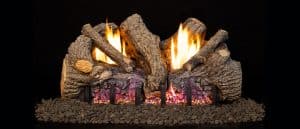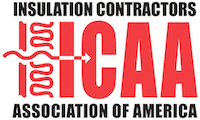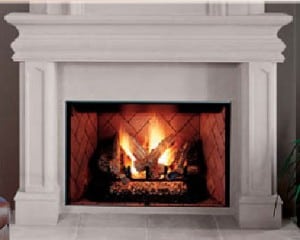 Residential Fireplaces & Gas Logs
Residential Fireplaces & Gas Logs
While the Metro Atlanta area may be known for its warmth and also its moderate temperatures, it can get very cold! Residential Fireplaces are not only functional, but can be stunning architectural details, adding to the warmth and glow of your home. They also add value to your home. If you are not sure which fireplace is right for you, contact us today and we can help with your fireplace repair and installation. We are your #1 local choice for residential fireplaces in Atlanta, GA, and also the surrounding areas.
Click here to read about the Frequently Asked Questions
Fill out the form below to request appointment or quote.
Residential Fireplaces
Fireplace & Gas Log Options
- Gas Logs
- Vented Fireplaces
- Vent Free Fireplaces
- Wood Burning
- Electric
- Outdoor/Patio
- Accessories
- Mantels
- Marble & Granite Surrounds
- Chimney Caps
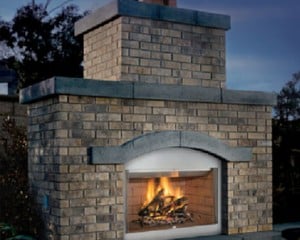
Fireplace & Gas Logs Experts in Atlanta GA – Metro Garage Door
Call Metro Garage Door for a fireplace or gas logs installation or repair quote in metro Atlanta area.
FAQs – Frequently Asked Questions related to Fireplaces and Gas Logs
- Do I need to service my gas fireplace?
- What kind of service is recommended for my gas fireplace?
- Can I complete my own service my gas fireplace?
- Are gas fireplace technicians really certified in the industry?
- What kind of gas fireplaces are there?
- What are the different types of gas logs?
- Sand pan burner – what is that?
- Is it normal for the wall above my fireplace to get hot?
- Why does the glass get black on my fireplace?
- I’ve noticed a white film on my fireplace glass – is that normal?
- In order to use my gas logs, should the damper be open?
- Does it matter what kind of gas logs I purchase for my fireplace?
- Can I purchase a Remote Control for my fireplace?
- I’ve noticed rust inside of my gas fireplace – is this normal?
- Does it mean that I have a gas fireplace if I have a gas log lighter.
- Is a chimney necessary to have a gas fireplace?
1. Do I need to service my gas fireplace?
YES! Most gas fireplace manufacturers recommend an annual inspection and also a cleaning. Dust, dirt, and also insects can all clog up gas fireplaces. This may cause the fireplace to burn inefficiently. Loose wire connections can also affect the way your fireplace performs. Gaskets can erode which may allow carbon monoxide to leak into your home. An annual service of your gas fireplace can help correct and also prevent these type of problems.
2. What kind of service is recommended for my gas fireplace?
This depends on the type of gas fireplace your home has.
Our general service removes everything on the inside of the combustion chamber. The pilot and also the burners are inspected and cleaned. Then, the fireplace box is vacuumed. Also, the fireplace burners and logs are thoroughly cleaned. All safety switches are checked to make sure they are working properly. Then, everything is put back together in working order. We will clean the glass doors. If applicable, the pilot light is then lit and also tested. The entire fireplace system is monitored to confirm that everything is working correctly together.
3. Can I complete my own service my gas fireplace?
Yes. There are a few things that you can do yourself.
Clean glass doors once a month. Failing to clean in a timely manner will cause your glass to become permanently cloudy.
Check the gaskets, wing nuts, and bolts on the glass door once a month. If it is cracked or missing pieces, it should be replaced immediately. Loose seals can allow carbon monoxide to enter your home.
Check the outside vent. Make sure there are no leaves or debris in the vent. If there are any damages, replace the vent kit.
4. Are gas fireplace technicians really certified in the industry?
Yes. This certification comes from gas fireplace manufacturers. Ask your technician about his or her certification and factory-training.
5. What kind of gas fireplaces are there?
Direct Vent, B-Vent, Vent-less, and Log Sets. Within each one of these main groups, there are several different types of fireplaces.
6. What are the different types of gas logs?
Vented and Unvented.
7. Sand pan burner – what is that?
A Sand Pan Burner is a vented set of gas logs. It’s one of the most realistic gas log options. These types of log use a metal pan and sand to create the flames when the gas is turned on. The damper should be opened when using this type of logs. This type creates carbon residues but gives it a real fire look.
8. Is it normal for the wall above my fireplace to get hot?
Yes. Direct-Vent and Vent-less types will allow the wall to get very hot. A decorative type of gas fireplace will create temperatures of 117 degrees higher than your room temperature.
9. Why does the glass get black on my fireplace?
The carbon buildup on the glass will occur based on the burning of the flames. If you have excessive buildup, there may be a problem. Your unit needs to be inspected.
10. I’ve noticed a white film on my fireplace glass – is that normal?
During the first use of your new fireplace, the initial burn can create that white film. Also, the film can occur as a by-product of burning liquid propane (L.P.) gas. Also, by dust and dirt burning, it can also leave a film on the glass.
11. In order to use my gas logs, should the damper be open?
This depends on the type of gas logs your home has. But yes, it is required to be open with a Sand Pan Burner. No, if you have a set of vent-less logs.
12. Does it matter what kind of gas logs I purchase for my fireplace?
Yes it does matter. The logs and also the burner were specifically designed and tested to work in combination with each other. Changing the parts without professional help, could result in damage to your fireplace. If you have gas logs, then you may be able to buy replacement logs or also a new set. Check with your fireplace professional.
13. Can I purchase a Remote Control for my fireplace?
This depends on the type of fireplace your home has. Yes, if you have a millivolt system. No, if you have a one-stage valve system. Therefore if you are not sure, contact us and we can help you determine the answer.
14. I’ve noticed rust inside of my gas fireplace – is this normal?
Water vapor is a by-product of gas combustion. Most of it will evaporate. But, if some remains this can cause rust to develop. If you find rust, you can sand off the rust and paint with a heat-resistant paint. If left unchecked, your gas fireplace can rust through. This is unsafe since carbon monoxide and also other fumes can leak into your home.
15. Does it mean that I have a gas fireplace if I have a gas log lighter.
No. But, you can have your masonry fireplace converted to a gas fireplace easily.
16. Is a chimney necessary to have a gas fireplace?
No, Not necessarily. Options include direct vent gas fireplaces, B-vent gas fireplace or also unvented gas logs.
Direct Vent gas fireplaces vent directly through a wall or also out the roof. They do not affect the indoor air quality.
B-Vent gas fireplace must be vented vertically through either a chimney or also out the roof. These are not as efficient as Direct Vent Fireplaces.
Unvented Gas Logs utilize new burner technology and also a high burn temperature to keep the carbon monoxide levels down to an acceptable level.
Makes and Models
Sassafras
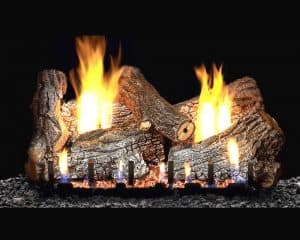
Foothills
